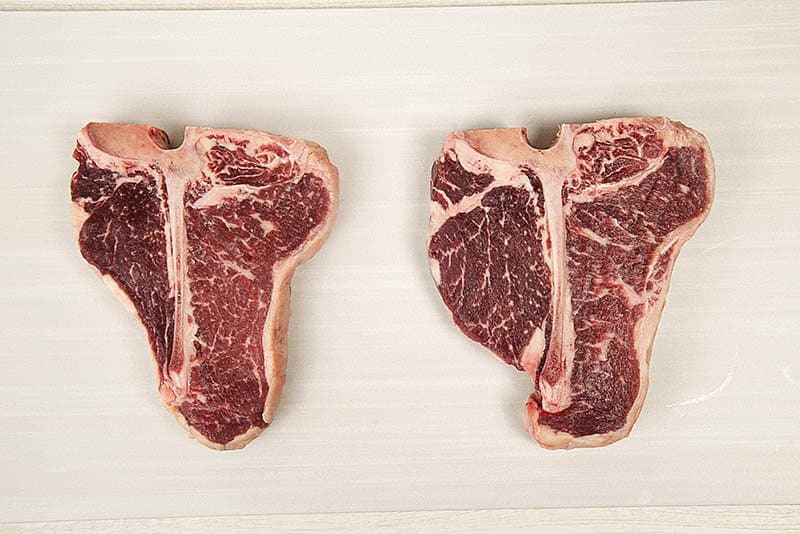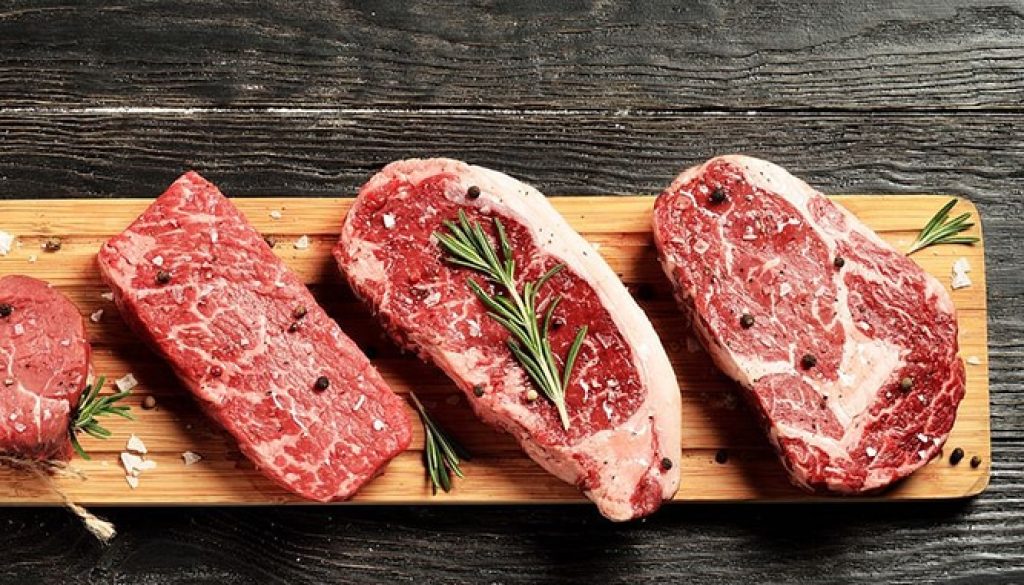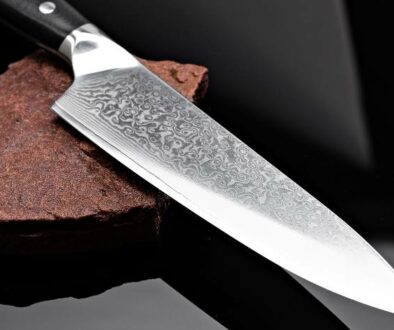Best Meat Cuts to Grill: The ultimate guide
When you’re at a steakhouse or having a grilled lunch at your friend’s house, it’s easy to go for any cut of meat you’re craving at the time or is offered to you; however, when it comes to you hosting your own grilled lunch over at your home, you might find yourself a bit confused on which cuts of meat are the most common, where does each cut come from, how to grill each cut and more.
So here is the ultimate guide on the best beef cuts to grill with some tips on how to achieve the best flavor in grilling them.
The Ribeye
The ribeye is undoubtedly one of the most favorable steaks to grill. It comes from the upper rib cage of the cow (fun fact: it typically comes from between the 6th and 12th rib). The ribeye is well- known for being a tender and flavorful cut of meat. The muscle a ribeye is cut from is not used as much during the cow’s lifetime, it leads to the meat be tender.
Due to the amount of marbling in a ribeye cut, the fat will give your steak a smooth texture and rich flavor if cooked properly.
How to go on with grilling a Ribeye?
Although you can ask your butcher to cut it as thick as you’d like, ribeye cuts are best at 1.5 to 2 inches of thickness. Cook over direct heat for 4-5 minutes on each side for medium-rare. As for spices: salt and black pepper work just fine! If you’d like to add more spices like paprika, thyme, etc.: you absolutely can.
Be careful, though! Since the ribeye has quite a lot of fat, it can cause flare-ups if it drips down to the hot coals, so keep an eye out for when to move your steak to prevent it from burning.
The Tenderloin
Like the ribeye, the tenderloin is a cut from a section of the cow’s muscle that isn’t used much during its’ life, so it is also an exceptionally tender cut of meat; however, unlike the ribeye, it has less fat.
The tenderloin steak comes from the thick parts in the tenderloin section of the cow, and it’s located in the back.
How to grill a Tenderloin Steak
The tenderloin steak has a very smooth texture, so in order to keep it as it is, you need to be careful not to use any cooking methods that could mess with it.
Since the tenderloin has less fat compared to others steaks, people usually add fats to it when getting ready to cook it, like butter, so that it doesn’t dry out any further when cooking. Again, salt and pepper are the basics of Spicing101, and they guarantee your steak a wonderful flavor.
New York Strip
When you’re at a steakhouse for lunch with some friends, you might hear a friend or two ask for a ‘New York Strip’; the Strip Steak, or the New York Strip as many know it, is very common among frequent steakhouse goers, and it is known for its’ medium level marbling, as well as a cap of fat on its’ side.
Compared to the cuts of meat we’ve mentioned before, the Strip Steak has a tighter texture than a Ribeye or Tenderloin- it is the perfect meat for those who want a rich meaty flavor with a little more chew. The Strip Steak comes from the loin, near the rear.
How should I grill my Strip Steak
The Strip Steak, like the Ribeye, cooks well with high heats. And unlike the Ribeye, it cooks faster and causes fewer flare-ups due to it having less marbling.
Place the steaks on the grill and cook until golden brown and slightly charred, 4 to 5 minutes. Turn the steaks over and continue to grill 3 to 5 minutes for medium-rare (an internal temperature of 135 degrees F), 5 to 7 minutes for medium (140 degrees F), or 8 to 10 minutes for medium-well (150 degrees F).
• The T- Bone (and Porterhouse)
The T- bone has the best of both worlds. Where does it come from? That is a bit of a tricky question, but we’ll try to answer it as well as we can: the T- Bone is cut from the short loin, which is also broken down into two subprimal, which are the Strip Steak and the Tenderloin. Those two are separated by a bone in the shape of a T, thus giving this cut of meat its’ name. Best of both worlds, indeed.
What is the difference between a T- Bone steak and a Porterhouse Steak?
A lot of people believe that the T- Bone steak and the Porterhouse steak are the same, and that is true to some extent. What really differs between them is the area they’re cut from. A T- Bone steak is cut from the front of the short loin, while a Porterhouse steak is cut from the rear part of the short loin. Cutting them like so results in the T- Bone steak having more ‘Strip Steak’, and the Porterhouse steak having more ‘Tenderloin’.

How to grill the T- Bone (or Porterhouse) Steak
Although we established that this cut of meat has the best of both worlds because it has Tenderloin and Strip Steak- it also needs a bit more attention than each one would separately.
You need to be careful with how you grill your T- Bone as it can easily dry out on one side, or undercook on the other. The best way you could cook a T- Bone steak is by using a two-zone method*; by using this method you can move the Tenderloin side of your steak away from the hot area (which would prevent it from drying out), and keep the Strip Steak section on top of the hot area (which would allow it to continue cooking properly).
This method of grilling also works for a Porterhouse steak.
*the two-zone method is when you set up your grill in two zones: one side of your grill would be hot and it’d be where your food would be cooking directly; the other side would not be producing heat of its’ own, instead, it’d be indirectly cooking your food by the heat beside it.
The four cuts of meats we’ve just mentioned are the most common and most asked cuts from butchers- and depending on the occasion as well as availability, can come in ranging prices. However, we’d also like to open your eyes to a few other types of steaks that not many bother trying or even know exist.
The Skirt Steak
This specific cut of steak comes from the inside of the chest and abdominal activity, specifically: it’s cut from the diaphragm muscle- so unlike the other meats mentioned before, this one has actually been used a lot during the cow’s life. So if not cooked properly it would result in a chewy texture and would be hard to eat.
How to grill a Skirt Steak
The Skirt Steak is known for having a rich flavor, and should be cooked fast on a very hot grill (some people go as far as to put it directly on top of the hot coals); of course, like all meats, it is great when it’s marinated overnight.
Be careful! If you don’t cook your Skirt Steak well, it can be chewy and tough.
The Flank Steak
Like the Skirt Steak, the Flank Steak is flavorful and can be tough if not cooked well, and it has bundles of fat that give it a thick- grained texture.
This cut of meat comes from the belly of the animal, near the back legs. It is a lean cut of meat due to coming from an area that was used a lot during the animal’s life, and as mentioned before: should be cooked properly to avoid having a tough steak.
How to grill a Flank Steak
The Flank Steak should be grilled quickly over high heat, and it is great when marinated overnight. Marinating it with olive oil, salt, pepper, and vinegar, will not tenderize your meat. Place steak on the hot side of the grill. Grill for a minute or two on each side to get a good sear, then move the steak to the cooler side of the grill, cover and cook a few minutes more until done to your liking.
The Flat Iron
The Flat Iron is cut from the front shoulder section and is usually cut lengthwise rather than crosswise to avoid a thick connective tissue, making it more tender in the result. It tends to be compared to a Strip Steak, and it is considered as a cheaper alternative by many.
How to grill a Flat Iron
Simply cook it quickly over high heat on your grill; most people prefer it to be medium-rare.
The Tri- Trip Steak
Just like a Flat Iron steak is considered a cheaper dupe for a Strip Steak- a Tri- Trip steak is considered a budget-friendly Ribeye. It is cut from the Sirloin Primal, and it is a lean and tender cut of meat with a fine amount of marbling and a meaty flavor. Similar to a Ribeye steak. The only difference is that it is a bit leaner.
How to grill your Tri- Trip Steak?
Allowing it to cook for anything further than medium-rare can dry out your Tri- Trip steak because of its’ leanness; however, this problem can easily be resolved if you allow your meat to marinate from 2 hours up to 24 hours, as this will keep it moist and tender.
Alright! We’ve given you eight different cuts of meat that you can ask from your butcher and enjoy with your friends and family for your next barbecue. From the top 4 cuts most people ask for, to 4 others that are not as known but just as good- we’ve got you covered!




